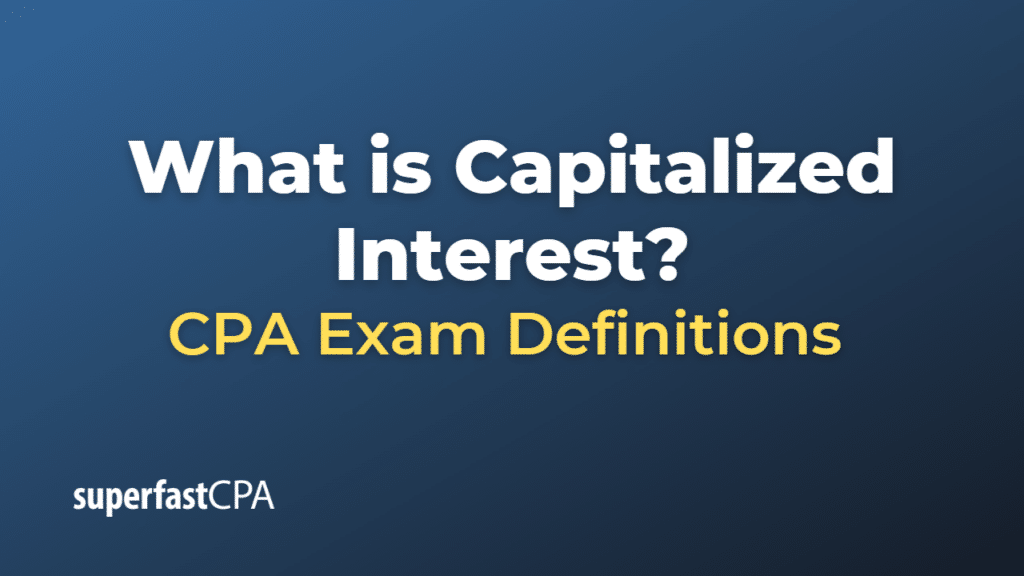Capitalized Interest
Capitalized interest is the interest expense incurred during the construction or development of a long-term asset that is added to the cost of the asset rather than being recognized as an immediate expense on the income statement. This practice is in accordance with Generally Accepted Accounting Principles (GAAP) and International Financial Reporting Standards (IFRS).
Capitalizing interest is applicable when a company finances the construction or development of a long-term asset, such as a building, a manufacturing plant, or a large-scale infrastructure project, using borrowed funds. The interest expense incurred during the construction period is considered a part of the total cost of the asset, as it represents the financing cost associated with the asset’s construction.
Once the construction or development of the asset is completed and the asset is placed into service, the capitalized interest becomes a part of the asset’s depreciable or amortizable base, along with other costs associated with the acquisition or development of the asset. This allows the company to allocate the interest expense over the asset’s useful life, matching the cost with the revenues generated by the asset.
Capitalizing interest helps provide a more accurate representation of a company’s financial performance by reflecting the full cost of constructing or developing a long-term asset, including the financing costs. It also aids in better tracking and managing long-term investments in assets that provide economic benefits over an extended period.
Example of Capitalized Interest
Let’s consider a fictional company, “BridgeBuilders Inc.,” that decides to construct a new manufacturing facility. The total cost of constructing the facility, excluding the interest expense, is $10,000,000. BridgeBuilders Inc. finances the construction with a loan at an annual interest rate of 5%. The construction period is expected to last for two years.
To calculate the interest expense incurred during the construction period, the company will multiply the outstanding loan balance by the interest rate:
Interest Expense per Year = Loan Balance x Interest Rate = $10,000,000 x 0.05 = $500,000
As the construction period lasts for two years, the total interest expense during this period will be:
Total Interest Expense = Interest Expense per Year x 2 = $500,000 x 2 = $1,000,000
Instead of recognizing the interest expense of $1,000,000 on the income statement during the construction period, BridgeBuilders Inc. will capitalize the interest by adding it to the cost of the manufacturing facility:
Capitalized Manufacturing Facility Cost = Construction Cost + Capitalized Interest = $10,000,000 + $1,000,000 = $11,000,000
The manufacturing facility will be recorded on the balance sheet as a fixed asset with a capitalized cost of $11,000,000. Once the facility is operational, BridgeBuilders Inc. will depreciate the capitalized costs, including the interest expense, over the facility’s useful life. This will allow the company to allocate the interest expense over the asset’s useful life, matching the cost with the revenues generated by the manufacturing facility.
By capitalizing the interest expense, BridgeBuilders Inc. can better track and manage its long-term investments in assets that provide economic benefits over an extended period and more accurately represent the full cost of constructing the manufacturing facility.













